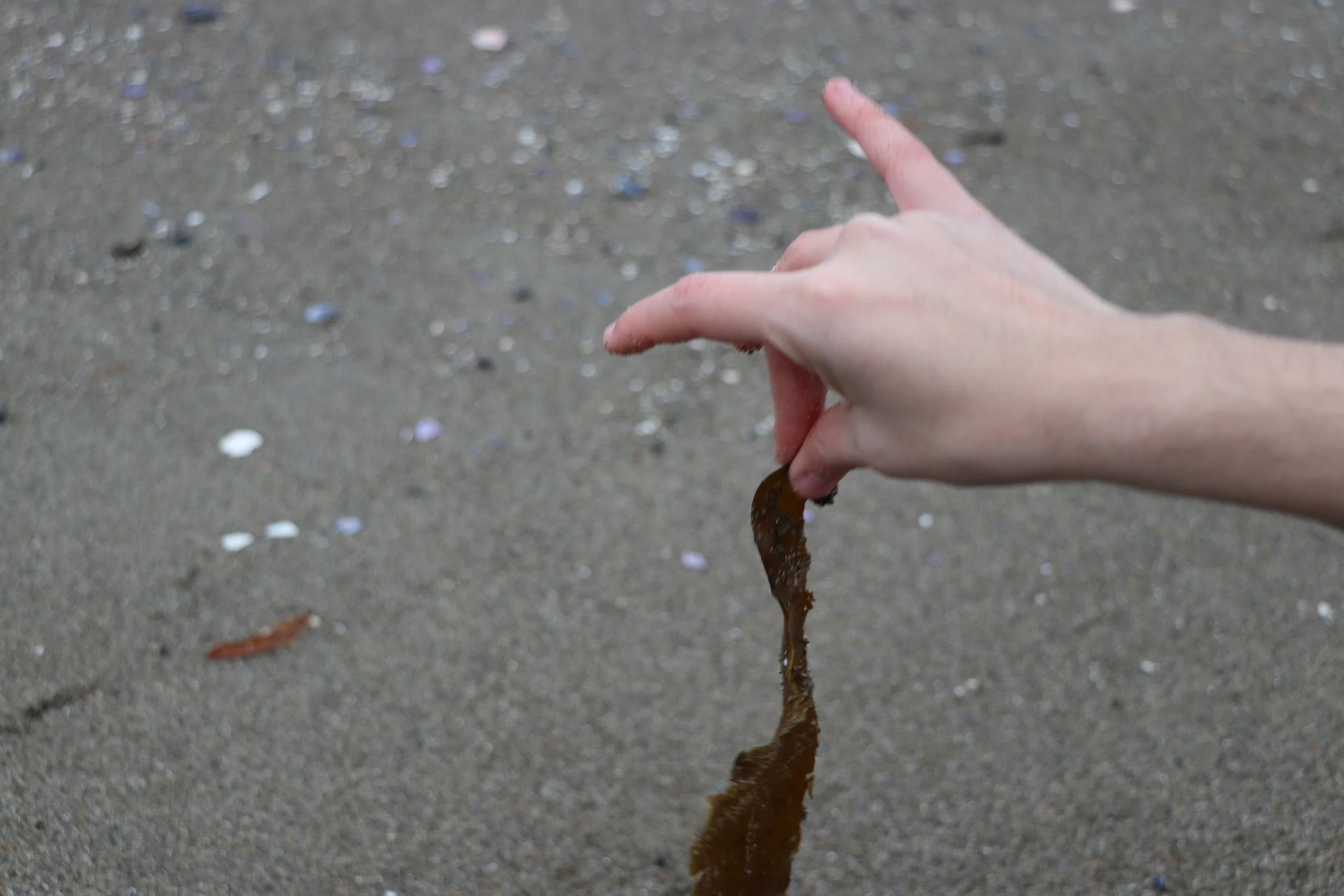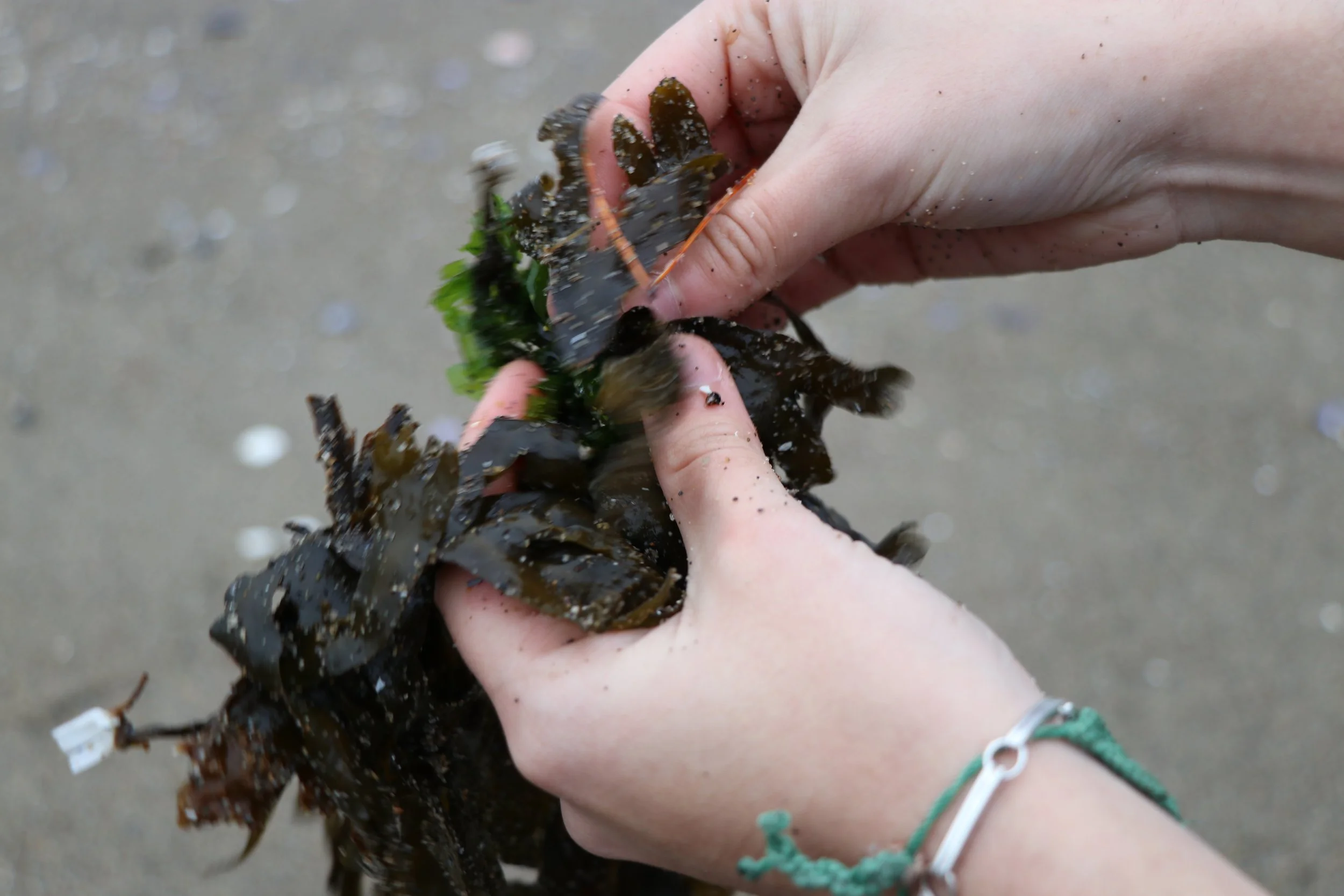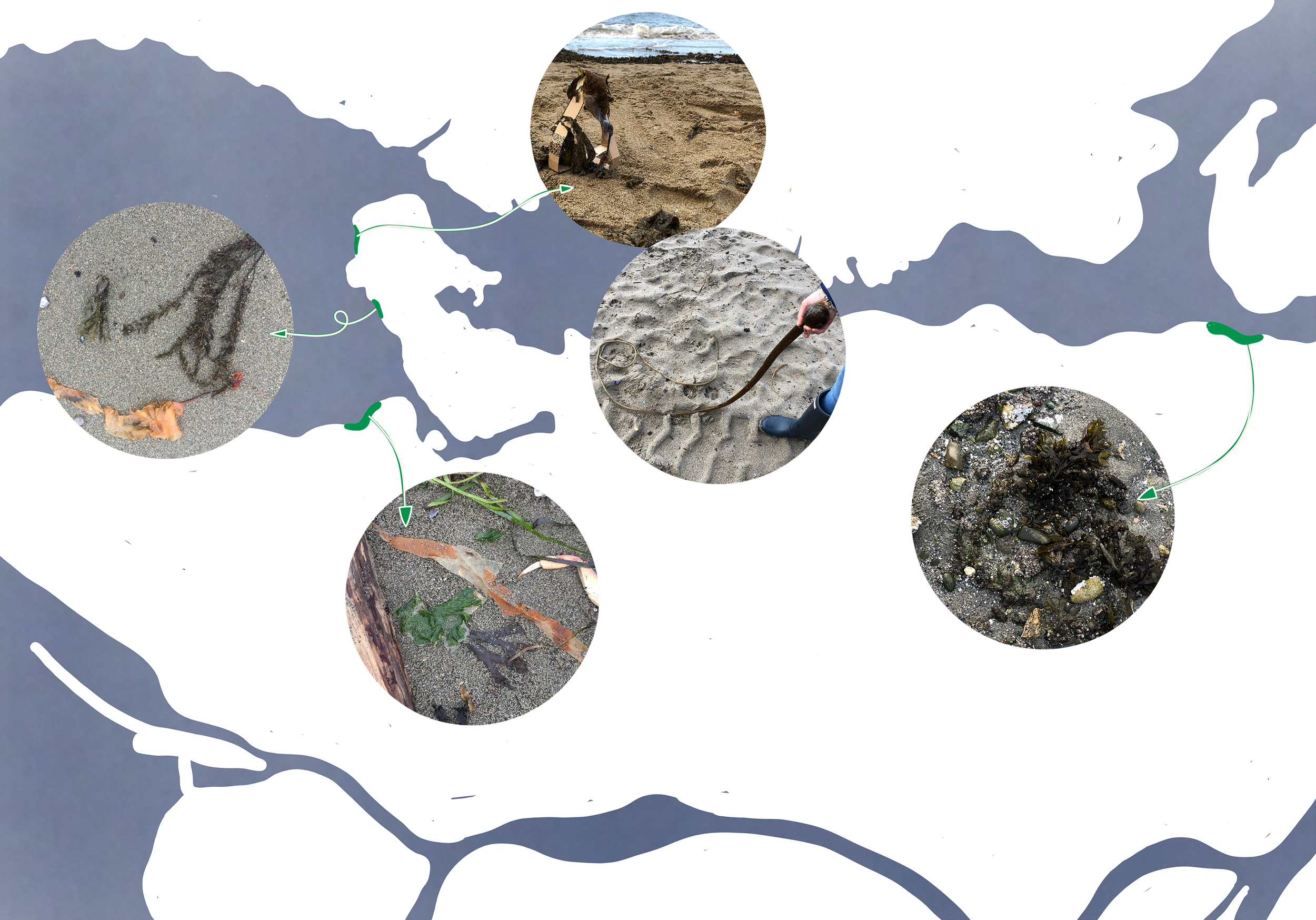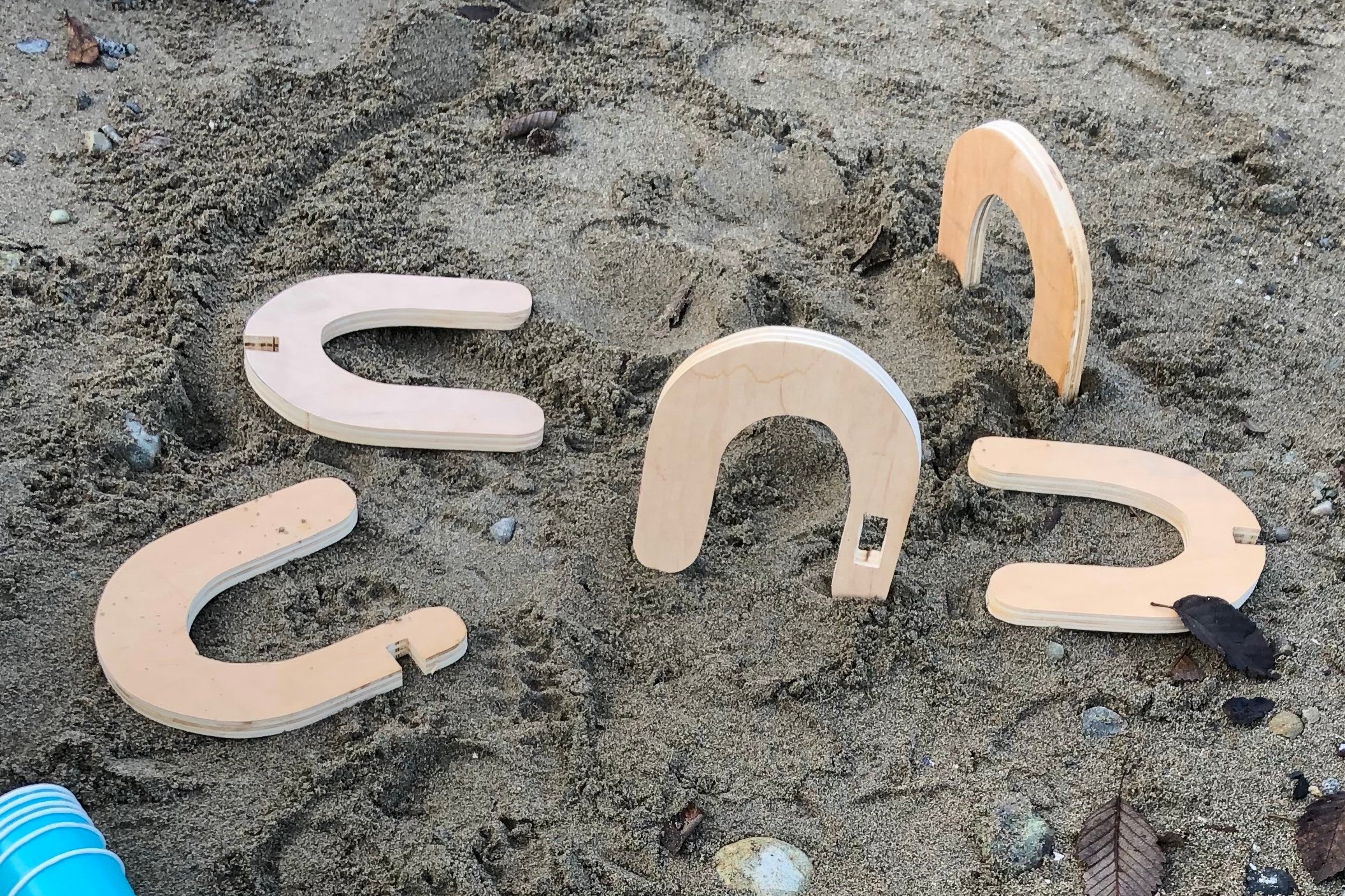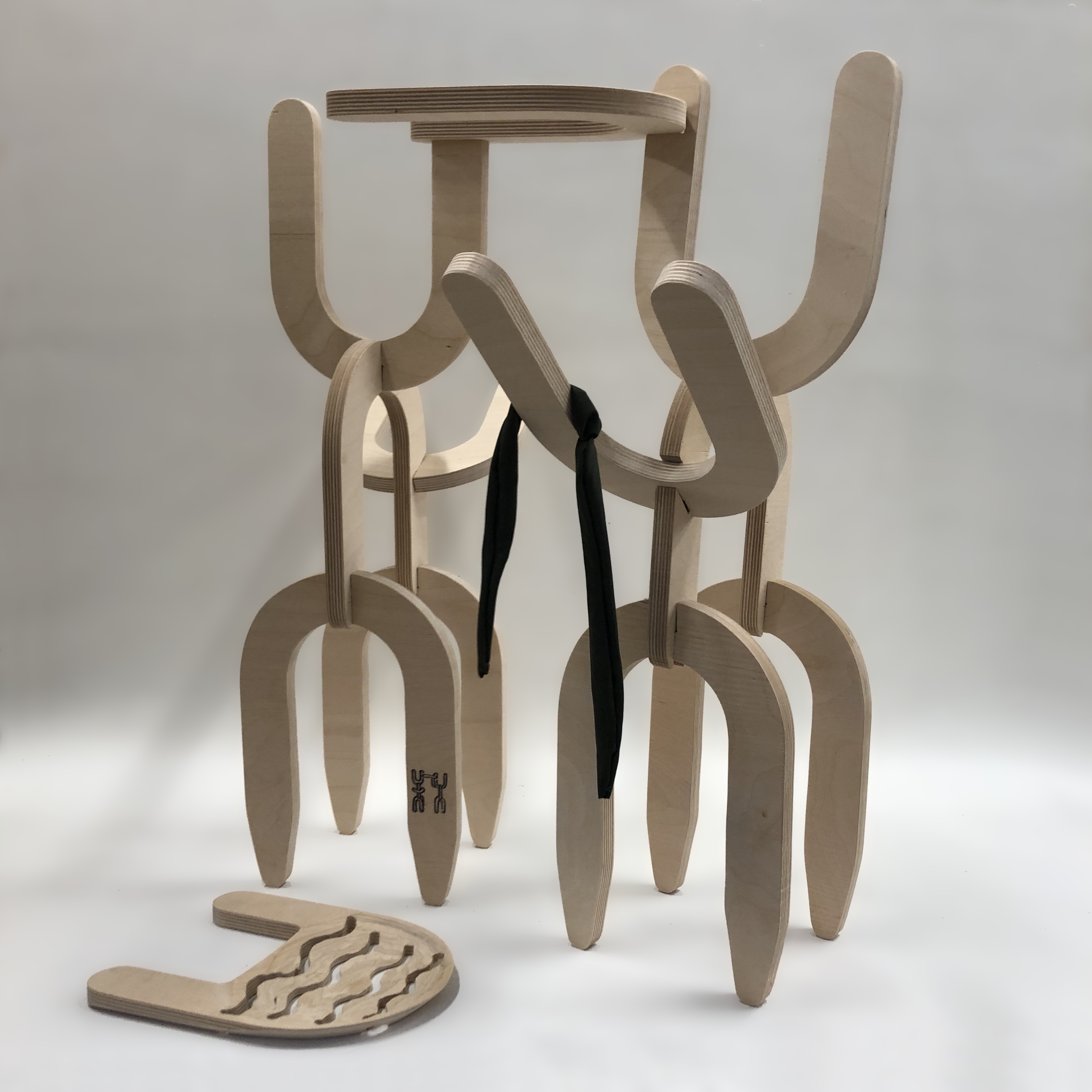Kelp!
Created in collaboration with my peer Julia de la Puente, this project was part of the broader initiative “Activating Design for Biodiversity.” Our challenge was to design a portable, engaging tool and ritual that could foster a deeper awareness and connection with organisms inhabiting local coastal shorelines, especially kelp, a keystone species essential to marine ecosystems.
Through hands-on environmental research, we discovered that aquatic plants like kelp are often overlooked or avoided. Many people, ourselves included, associated kelp with unpleasant tactile experiences. We viewed this discomfort as a design opportunity: to reframe kelp as something to engage with, rather than shy away from.
We explored beaches throughout the region, collecting washed-up kelp. We examined its textures, colors, and scents. These sensory experiences helped us understand both the ecological importance of kelp and the human hesitation to engage with it. To shift this perception, we devised a play-based ritual in the form of a portable throwing game. Participants use a modular wooden frame to hang pieces of kelp found on the shore by tossing them from a short distance, similar to skipping stones, a practice that already unintentionally raises our awareness of the shoreline.
The ritual encourages people to slow down, observe, and feel the living textures of the shoreline, using play to foster ecological awareness, memory and care.
The tool or game includes 11 pieces to make up the frame, a fabric kelp, and a kelp rinser. There are no instructions; a fabric kelp sample and an illustrative diagram provide suggestions for assembling and interacting with the tool while allowing room for reinterpretation.
This project deepened our understanding of design as a relational and situated practice. It reminded us that imagining how a tool might be used is not enough; testing it in context is essential. Designing with nature, not just for it, means relinquishing control and embracing unpredictability. Through collaborative making and place-based research, we learned how rituals in design can open moments for reflection, connection, and awareness, especially in environments we too often overlook.

